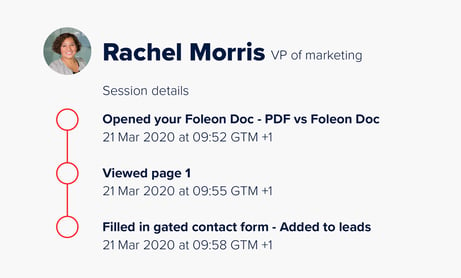By now, most of us know that producing engaging and high-quality content is essential for businesses to stay relevant. With mountains of online content constantly being created and shared, getting your message to the right audience takes time and effort. Content intelligence lets you cut through the noise, get your message heard by the right people, and stay that way.
In a nutshell, content intelligence is about creating awesome content that speaks directly to your audience. It starts with gathering data on your content, audience, and market. We then analyze this data to help make intelligent decisions to improve your content marketing, by informing the kind of content you should create, how to deliver it, and how to make it even better.
Content intelligence vs. data analytics: What’s the difference?
Although they overlap, there is a difference between content intelligence and data analytics. Content intelligence focuses specifically on analyzing content and its performance. In contrast, other marketing analytics and data analysis forms may focus on broader metrics like website traffic or customer behavior. Rather, ontent intelligence also uses machine learning and natural language processing to extract insights from content data.
Leveraging content intelligence
Only some understand the difference between simply creating content and employing a data-driven content strategy that drives impact and value to consumers. It's not enough to create content anymore — you must leverage content intelligence to stay ahead of the curve. Content intelligence is essential for anyone working on content and looking to succeed in the highly competitive online environment. Investing in the right technology and a data-driven approach can create more impactful content and drive better results. Here’s how.
Identify your target audience
The first step in creating compelling content is understanding your target audience. By analyzing customer data, such as demographics, interests, and behaviors, you can gain insights into your audience and what they’re looking for. As we'll explore in the next section, these insights can be used to create content that resonates with your audience.
Create content that resonates with your audience
Once you have an understanding of your target audience, your next step should be to create content that truly speaks to their needs and interests. Content intelligence comes in here; by analyzing how users interact with content, businesses can gain insights into what types of content are most effective at driving engagement and generating more leads.
For example, if you notice that your audience is spending more time on blog posts that are in-depth and research-heavy, you can adjust your content marketing strategy to focus on these types of posts. Or, if your audience is engaging more with visual content like infographics and videos, you can incorporate more of these elements into your content marketing plan.
Discover: 6 Popular Types of Content Experiences with Examples

Develop a kickass content marketing plan
Content intelligence is an excellent tool for developing a comprehensive content marketing plan that effectively aligns with your business goals and targets your audience. By analyzing data on content performance and audience behavior, businesses can identify gaps in their content strategy and adjust their approach to better meet their audience's needs.
Let’s say your audience engages more with content on social media platforms like Instagram and Twitter. You can adjust your content marketing plan to prioritize these channels. Or, if your audience is more likely to engage with content during specific times or days of the week, you can adjust your content publishing schedule accordingly.
Enhance content performance
By analyzing data on metrics like page views, bounce rate, and conversion rate, businesses can identify which pieces of content resonate with their audience and which ones need improvement.
If you notice that a blog post has a high bounce rate, you could adjust the content or layout to make it more engaging and encourage users to stay on the page longer.
Discover: How to determine and measure inbound marketing KPIs.
Best practices for using content intelligence
With millions of blog posts, articles, videos, and social media updates created daily, making your content stand out is challenging. Leveraging content intelligence can significantly boost marketing strategies in today's digital terrain. Here are some of our best practices for using content intelligence:
Keep up with industry trends
Keeping up with the latest content marketing trends is crucial for staying ahead of the game. Understanding what topics resonate with your target audience, what types of content are performing well, and what your competitors are doing is essential. By staying on top of industry trends, you can create relevant, timely, and valuable content for your audience.
Tip: Inbound Marketing Trends to Stay On Top of in 2023
Calculate the impact of your content
Measuring the impact of your content is key for pinpointing what’s working and what’s not. Keep an eye on conversions, social shares, engagement rates, and page views. This will allow you to uncover areas for improvement so you can adjust your content strategy accordingly.
Discover: How to measure the ROI of your content marketing
Always optimizing
Content intelligence isn’t a one-and-done task but an ongoing strategy that is never truly finished. You should constantly check to see if the material you're producing connects with your audience. Keep an eye on your content, and don't hesitate to experiment with adjustments or new ideas. Just make sure you monitor engagement and other important b2b marketing metrics.
Involve other departments
Any content creator will tell you that creating content is collaborative. Usually, you need input or advice from other teams or departments to understand your audience and what resonates. As well as that, it’s likely that other teams are also creating content, and you want to make sure you’re working with each other, not against one another. Set up bi-weekly meetings with stakeholders outside of your team to stay aligned.
Follow these best practices to identify emerging trends in your audience's behavior and preferences. You’ll be able to create content with their needs in mind and adapt your plan if needed.

Here are some tips to avoid common pitfalls when using content intelligence:
- Ensure you're using a reliable and high-quality content intelligence platform.
- Avoid relying solely on content intelligence data and analytics to make decisions. Use it in conjunction with other sources of data and insights.
- Ensure you measure the right metrics and B2B marketing KPIs aligned with your business goals.
- Pay attention to the human element in content creation, audience targeting, and messaging — balancing content intelligence with creativity and intuition is important.
- Continuously test and refine your content intelligence approach, adjusting as needed to ensure the best outcomes.
Successful content intelligence strategies
It’s easy to preach about using content intelligence to boost your marketing efforts, but it’s a different story in practice. Plenty of successful companies are using content intelligence to stand out from the crowd.
One example of a company with a successful content intelligence strategy is Netflix.
Netflix has been using content intelligence to analyze vast user data to provide personalized recommendations. By analyzing user viewing habits, search history, and other data points, Netflix can make highly accurate predictions about what its users might want to watch next.
Netflix employs content intelligence and personalized suggestions to guide its new content selection and acquisition. Data is used by the corporation to evaluate what kinds of material are popular with its audience and to assist in choosing which series and films to develop or license.
One of the key contributors to Netflix's success and rise to prominence as one of the most widely used streaming services worldwide has been the company's content intelligence strategy. In the congested streaming industry, Netflix has maintained a competitive edge by leveraging data to guide its decisions and personalize the user experience.
Adobe is another organization that constantly makes use of content intelligence.
To determine the most popular subjects with their audience, Adobe employed content intelligence to evaluate user data from their blog. They then incorporated this information into their content strategy to help them produce more material on trending subjects. Adobe’s blog traffic increased by 78%, while time spent on the site increased by 63%.
Marriott International, the world's biggest and most international lodging firm, is another illustration.
Marriott analyzed consumer feedback from social media and other online channels using content intelligence to pinpoint the main problems and sources of complaints. After that, they focused on resolving the clients' identified pain points in their marketing messaging and customer service approach, using the knowledge to guide them.
Marriott saw a 100% increase in customer satisfaction scores and a 20% increase in revenue.
From these examples, we know the best way to conduct content intelligence is to take a data-driven approach to your strategy. Focus on delivering real value to your audience, and be sure to measure and refine your approach based on results continuously.
Building your content intelligence stack
Content Intelligence tools have become essential for any business looking to create and distribute content that resonates with its target audience. These handy tools provide insights into your audience and what resonates with them, allowing you to create highly personalized and engaging content that drives traffic and conversions.
With an abundance of tools and solutions available, choosing the right content intelligence stack can be overwhelming. Not to worry, here are some tips to help you make the right decision:
- Identify your objectives: Define your content marketing objectives before comparing different tools. Do you want to increase leads, boost SEO, or create interesting content? Once you clearly understand what you want to achieve, you can evaluate different tools based on their ability to help you reach those goals.
- Consider your budget: It goes without saying that you must consider your budget when researching a new tool. The price tag of content intelligence solutions can vary substantially. Although some tools may cost more upfront, they may have additional features that make them worthwhile over time. Others might cost less, but they offer only some of the features you require.
- Keep integrations in mind: Naturally, you want the tools you choose to integrate with the other solutions in your content marketing stack. So, if you use a CRM to manage your leads, you'll need a content intelligence tool that integrates with your CRM to help you track lead engagement and empower your sales team to close more deals.
- Evaluate the ease of use: Think about the tool's difficulty or ease. Do you have to do any training, or is it relatively easy to operate? Look for tools that have a user-friendly interface and provide helpful documentation and support to get you up and running quickly.

Content intelligence tools to try
If you’re ready to take your content marketing efforts to the next level through content intelligence, Foleon is an invaluable resource. With our revolutionary Content Platform, you can collect the intelligence you need to continually optimize and personalize your content at every point of the customer journey. Easily create content such as eBooks, whitepapers, and interactive magazines, all with drag-and-drop ease.
Foleon is just one example of the many tools available for content intelligence.
Another great tool for content intelligence is SEMrush. SEMrush delivers valuable insights into the keywords and phrases driving traffic to your site. By leveraging this solution, you can easily identify gaps in your content strategy, optimize your content for search engines, and even track your competitor's content performance.
Lastly, we have Clearscope. Clearscope utilizes AI to help you create content optimized specifically for search engines. With Clearscope, you can determine the keywords and phrases most relevant to your subject, analyze your competitors' content, and even get real-time tips for improving your content as you write.
Of course, there are so many more options available for content intelligence. With technology advancing at its current speed, new tools are constantly emerging. Leveraging this technology is vital for staying ahead of the game and empowers you to create content that increases traffic, increases engagement, and eventually aids in achieving your business objectives.
Scale your content strategy with content intelligence
Nowadays, businesses must create high-quality content at scale to remain relevant. It’s as simple as that. With the constant creation and sharing of online content, getting your message to the right audience is challenging. Insert content intelligence, the solution to this problem!
By gathering data on your content, audience, and market, analyzing it, and using the insights to create compelling, engaging content, you can get your message heard by the right people.
In conclusion, leveraging content intelligence in your marketing strategies is the key to standing out from the crowd and engaging your audience effectively. By understanding your audience, creating content that resonates with them, developing a comprehensive content marketing plan, and continuously optimizing your content strategy, you can use content intelligence to supercharge your marketing strategies.




